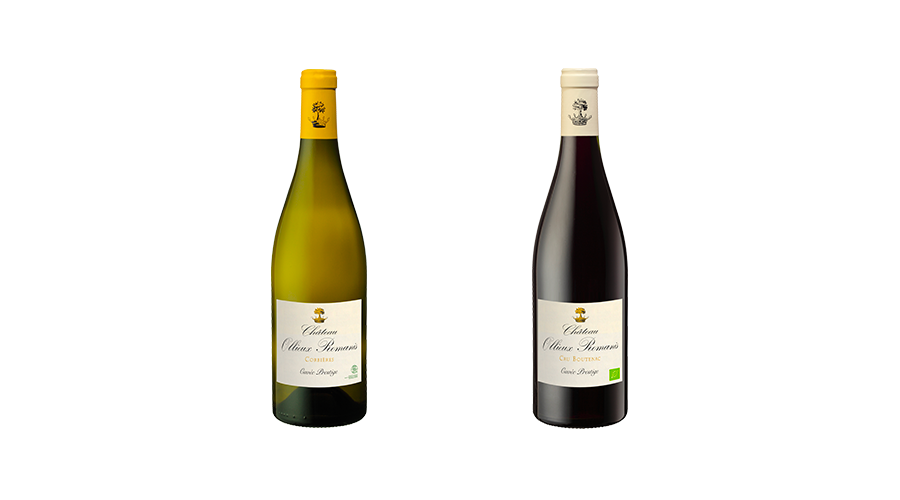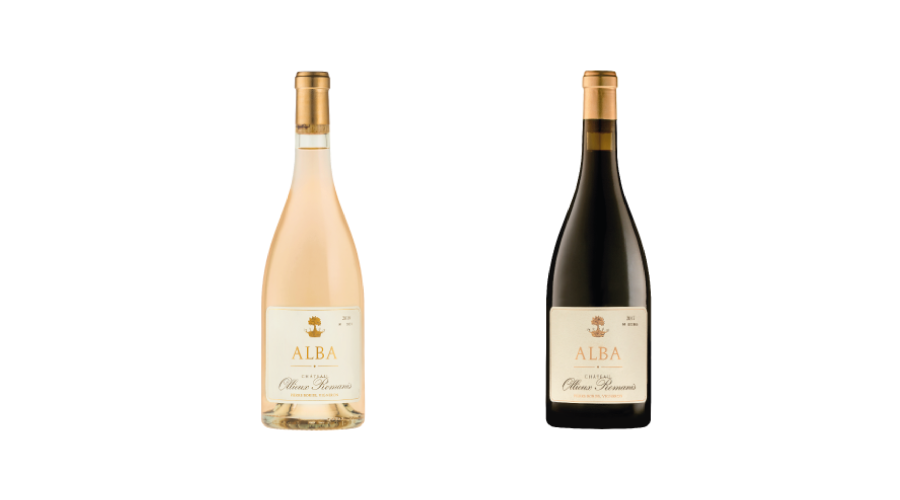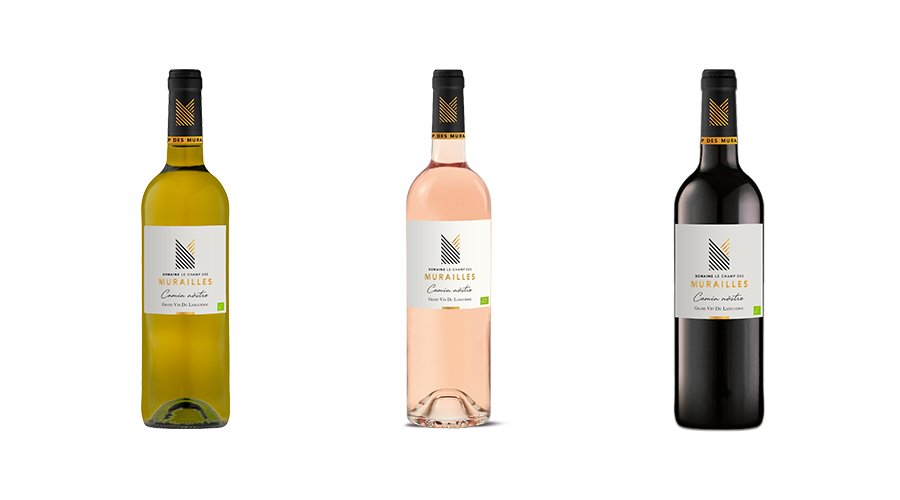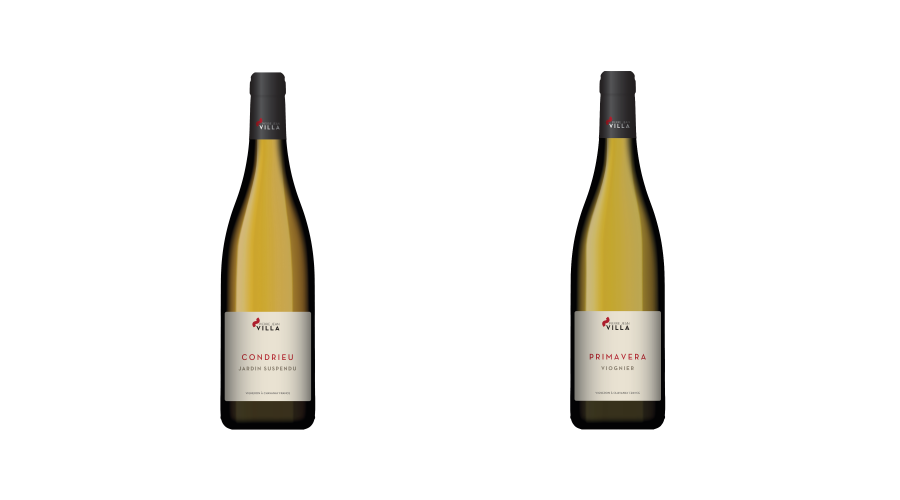
With the Experience range, we offer you a walk in the vineyards to see the terroirs and their specific characteristics. This range by Artisans Partisans offers wines with diverse profiles whose common denominator is the limitation of inputs and the creation of wines as close to nature as possible.
Varietal wines, fresh, tasty and easy to drink, complemented by terroir wines, precise, powerful and fair, the message is simple: wine for everyone!
These cuvées invite you to stroll through a mosaic of Languedoc terroirs. They reveal a story, a unique character, delivering rare wines, with each one featuring a rare personality.
Here we honour individuality.
Each grape has been carefully selected for a unique drinking experience, one that captures a host of emotions


Château Ollieux Romanis
A region between the mountains and the sea, 160 hectares of vines on a terroir rich in biological, geological and climatic diversity. This is the idyllic setting in which we are lucky enough to live and work. We are in tune with nature. We gratefully receive what it offers us and work to make it more beautiful.
Our estate is a place of perpetual interaction between Nature and the men and women who are devoted to it. Our hands embody centuries of learning. A union of natural and human resources finds expression on our estate.

Le Champ des Murailles
Le Champ des Murailles consists of 40 organically farmed plots of land scattered among the garrigues and hills. As if between Heaven and Earth.
We present a different aspect in Boutenac, a free interpretation of its terroir and its wines. Here, modernity and ancestral expertise are combined to produce wines with marked and accomplished identity profiles. They reflect the experience we have acquired over the years and the determination to make our approach environmentally friendly and modern.
We are driven by a vision: to enhance the area by bringing in technical expertise. In 2020, the estate will be equipped with a state-of-the-art building while remaining rooted in its native village, Fabrezan.

Le Champ des Murailles
Le Champ des Murailles consists of 40 organically farmed plots of land scattered among the garrigues and hills. As if between Heaven and Earth.
We present a different aspect in Boutenac, a free interpretation of its terroir and its wines. Here, modernity and ancestral expertise are combined to produce wines with marked and accomplished identity profiles. They reflect the experience we have acquired over the years and the determination to make our approach environmentally friendly and modern.
We are driven by a vision: to enhance the area by bringing in technical expertise. In 2020, the estate will be equipped with a state-of-the-art building while remaining rooted in its native village, Fabrezan.

Domaine Pierre Bories
This corner of paradise, anchored in Fabrezan, is run organically and is the antithesis of the mass farming model.
Small yields prevail here, the wines are vinified using natural methods and the environment is respected.
The range comprises four wines. They are the Petits Fantets in red and white, wines for immediately pleasurable drinking. L’île aux cabanes and Le Blanc are rare. These exceptional wines are limited to a maximum of 3,500 bottles per vintage.
This 5-hectare plot offers terroir wines with a strong personality, it is the context for the winemaker’s thoughts and the place where his expertise finds expression.
To please your taste buds, we have carefully selected wines from our friends that will allow your palate to travel the Rhône Valley, to stroll in the foothills of the Aude Pyrenees, to experience the bubbles of Limoux and to extend the visit into Catalonia.
Domaine Pierre Jean Villa
The Villas, whether in Spain or in France, have always worked the land. Pierre-Jean has never inherited any vines, but he has harvested them, visited the cellars, tasted the wines, and traced the vineyard roads with his fellow winegrowers.
1992: the big jump for Burgundy and its prestigious estates, Mommessin, Clos de Tart, and so on. Pierre-Jean Villa oversees the wine, from production to marketing.
2003: Pierre-Jean Villa returns to the land of his childhood and joins the trio of Vins de Vienne. He is the guardian of the temple until 2009.
2009: Pierre-Jean Villa creates his own estate in the heart of the Northern Rhône and begins his new life as a 100% independent winemaker.
2020: during that last year before organic certification, the estate established itself as one of the key addresses in the Northern Rhône with 17 hectares of major crus spread over the right and left banks of the Rhône: Côte-Rôtie, Condrieu, Saint-Joseph and Crozes-Hermitage, and over the slopes of Seyssuel to the north of Vienne.
Domaine Pierre Jean Villa
1992: the big jump for Burgundy and its prestigious estates, Mommessin, Clos de Tart, and so on. Pierre-Jean Villa oversees the wine, from production to marketing.
2003: Pierre-Jean Villa returns to the land of his childhood and joins the trio of Vins de Vienne. He is the guardian of the temple until 2009.
2009: Pierre-Jean Villa creates his own estate in the heart of the Northern Rhône and begins his new life as a 100% independent winemaker.
2020: during that last year before organic certification, the estate established itself as one of the key addresses in the Northern Rhône with 17 hectares of major crus spread over the right and left banks of the Rhône: Côte-Rôtie, Condrieu, Saint-Joseph and Crozes-Hermitage, and over the slopes of Seyssuel to the north of Vienne.

Les Hautes Terres
Somewhere on the borders of Languedoc, in the upper valley of the Aude. In the Roquetaillade cirque, a basin carved out of the great swell of the Pyrenean foothills, Mediterranean and Atlantic climates clash from one side to the other, from the scrubland to the undergrowth. Crisp, crystal-clear air, a peaceful atmosphere, cascading vines. The promise, of course, of outstanding wines Because of the altitude, the Les Hautes Terres organic wines, made from an eclectic cocktail of grape varieties in both white and red, offer an enchanting vitality and a sharp character.

Domaine de Mouscaillo
Located on the Roquetaillade terroir, the Domaine de Mouscaillo is a family estate, created in 2004 by Marie-Claire and Pierre FORT.
Today, Camille, Thomas and Frédéric hold the reins of these seven hectares of vines, perched in the foothills of the Aude Pyrenees.
An agro-ecological estate, on a high-altitude terroir, for atypical Languedoc wines, with a strong ageing potential.
It is a real climatic crossroads: Mediterranean influences, softened by the Corbières, mingle with Atlantic influences, all tempered by the coolness of the Pyrenees.
The landscapes found here are ancient: the limestone rocks date from the Ypresian period, 54 million years ago A multitude of marine fossils with poetic names are scattered throughout these marls and limestones, the witnesses to an ancient sea.

Domaine de Mouscaillo
Located on the Roquetaillade terroir, the Domaine de Mouscaillo is a family estate, created in 2004 by Marie-Claire and Pierre FORT.
Today, Camille, Thomas and Frédéric hold the reins of these seven hectares of vines, perched in the foothills of the Aude Pyrenees.
Un domaine conduit en Agroécologie, sur un terroir d’altitude, pour des vins atypiques du Languedoc, au fort potentiel de garde.
It is a real climatic crossroads: Mediterranean influences, softened by the Corbières, mingle with Atlantic influences, all tempered by the coolness of the Pyrenees.
The landscapes found here are ancient: the limestone rocks date from the Ypresian period, 54 million years ago A multitude of marine fossils with poetic names are scattered throughout these marls and limestones, the witnesses to an ancient sea.

Domaine Bertrand-Bergé
We make sure that the vines are comfortable in their environment. We are convinced that in order to obtain the quintessence of a terroir, the vines must be well tended and must flourish naturally in beautiful landscapes. Since the 2011 harvest, our estate has been cultivated according to organic farming methods, certified by Ecocert. Our vines are all ploughed, fertilised with an organic soil improver and treated with products that have no synthetic molecules, and we use very low doses of SO2 Out of respect for our vines, our soils, our vineyard workers and our customers, this requirement has become a matter of course and a duty to our children who will succeed us. We are also planting olive trees and truffle oaks, rebuilding the casots and restoring the low stone walls. All this contributes to the beauty and harmony of the landscape and to biodiversity.


Domaine Gauby
The estate started with 10 ares of vines cultivated on horseback by Gérard’s grandfather, who taught him how to work the vines. Agriculture was a means of survival at the time
The vineyard expanded in the mid-1980s, when Gérard decided to take over and develop the family estate. It is gradually growing from 3 to 100 hectares in mixed farming to date, including 40 hectares of vines up to 120 years old.
The switch to organic farming took place in 1996 in an effort to respect the natural surroundings. Chemical and synthetic products are discarded in favour of home-made preparations based on plants, essential oils, etc.
This respect for the terroir takes on its full meaning when one considers the geological richness of the soil in Calce.
The environment is still very unspoilt, wild, arid and hilly. It offers magnificent terroirs whose vertical strata allow the roots to plunge deep into the soil. Terroirs composed of limestone in the north, marl and schist in the south. Components that are in some places intimately intertwined.
In 2014, all new plantings were carried out under the Agro-Forestry system. Tree species are selected for their adaptability to poor soils and dry climates.
The intention is to air-condition the vineyards in the future, by lowering the ground temperatures by a few degrees.


Domaine Gauby
The estate started with 10 ares of vines cultivated on horseback by Gérard’s grandfather, who taught him how to work the vines. Agriculture was a means of survival at the time
The vineyard expanded in the mid-1980s, when Gérard decided to take over and develop the family estate. It is gradually growing from 3 to 100 hectares in mixed farming to date, including 40 hectares of vines up to 120 years old.
The switch to organic farming took place in 1996 in an effort to respect the natural surroundings. Chemical and synthetic products are discarded in favour of home-made preparations based on plants, essential oils, etc.
This respect for the terroir takes on its full meaning when one considers the geological richness of the soil in Calce.
The environment is still very unspoilt, wild, arid and hilly. It offers magnificent terroirs whose vertical strata allow the roots to plunge deep into the soil. Terroirs composed of limestone in the north, marl and schist in the south. Components that are in some places intimately intertwined.
In 2014, all new plantings were carried out under the Agro-Forestry system. Tree species are selected for their adaptability to poor soils and dry climates.
The intention is to air-condition the vineyards in the future, by lowering the ground temperatures by a few degrees.

Domaine Terra Remota
Terra Remota is a continuous 54-hectare plot in the foothills of the Albères. It is a granitic arena terroir which is interesting for wine growing. It is not very fertile and favours the drainage of rain. Granite is a light-coloured and therefore cold stone, which guarantees the maintenance of acidity and reasonable PH levels. In 2003 and 2004, 23 hectares were planted. Despite the need for land clearance, the property has maintained wooded areas that enhance the local flora and fauna in an environmentally friendly manner. There are 15 plots, where different low-yielding grape varieties were planted. The idea was to maintain part of the production with typical grape varieties of the area, Grenache Noir and Grenache Blanc. Traditional French varieties that can acclimatise to the region have also been planted: Syrah; Cabernet Sauvignon and Chardonnay. A variety from the West of Spain, Tempranillo, completes this line-up. The property also has a 0.8-hectare plot of Chenin Blanc in experimental production.


Maxime Magnon
Maxime Magnon has been in business for over ten years and was influenced by his background in the Beaujolais region (cold maceration, minimal use of sulphur). He has retained the best of this approach to define a style of wine that is now perfectly formed, still characterised by its great digestibility, with a remarkable finesse of texture and precision of flavour. His style is unique, his wines express the character of the terroir with real depth. The winemaker is constantly refining the details that will enable them to go even further.
After the grapes are handpicked and placed into little crates, he practises natural vinification which starts with fermentation at low temperature, using only indigenous yeasts. The wine is aged in barrels, without fining or filtration for the reds, with gentle filtration for the whites, and in both cases with the addition of a homeopathic dose of sulphur.
These cuvées are distinguished by a well-established style that combines fruitiness, freshness, digestibility, fine texture, precision and balance.
The wines of Maxime Magnon are a tribute to the region of Corbières.
Maxime Magnon
Maxime Magnon has been in business for over ten years and was influenced by his background in the Beaujolais region (cold maceration, minimal use of sulphur). He has retained the best of this approach to define a style of wine that is now perfectly formed, still characterised by its great digestibility, with a remarkable finesse of texture and precision of flavour. His style is unique, his wines express the character of the terroir with real depth. The winemaker is constantly refining the details that will enable them to go even further.
After the grapes are handpicked and placed into little crates, he practises natural vinification which starts with fermentation at low temperature, using only indigenous yeasts. The wine is aged in barrels, without fining or filtration for the reds, with gentle filtration for the whites, and in both cases with the addition of a homeopathic dose of sulphur.
These cuvées are distinguished by a well-established style that combines fruitiness, freshness, digestibility, fine texture, precision and balance.
The wines of Maxime Magnon are a tribute to the region of Corbières.


Domaine Ledogar
In 1998, the Ledogar family converted the cooperative estate into a private cellar. The vineyard, of about twenty hectares, extends over the clay and limestone mixed with the rounded pebbles and red sandstone of the young Corbières-Boutenac appellation, where the not-so-very-fertile soils are very favourable to the full aromatic expression of the old Carignans. Organic since 2009, a great deal of work, the vineyard has vines ranging in age from 60 to 120 years. The whites, with their great character, are made from macabeu and white Carignan. The wines have a certain vitality, that touch of originality that sparks emotion.


Monsieur S
Etienne Fort is a young winegrower, a young padawan, settled a few miles from Roquetaillade (the home of Limoux with or without bubbles*). There, under the mysterious name of Monsieur S, he has recently been making several thousand bottles of Blanquette and Crémant de Limoux. As for the blanquette, local tradition dictates the use of Mauzac.
So, like a true great, here he is at work providing freshness and a fruity touch to an undosed, lively and playful bubble. As for the crémant, it is with a Chardonnay base, enhanced with Chenin and a touch of Pinot, that Étienne really hits the mark.
A very fine bubble, a tension reminiscent of the vivacity of a winter breeze, deftly awakening taste buds and pupils, unsettled by this rippling wave with its faint saline note.
Monsieur S
Etienne Fort is a young winegrower, a young padawan, settled a few miles from Roquetaillade (the home of Limoux with or without bubbles*). There, under the mysterious name of Monsieur S, he has recently been making several thousand bottles of Blanquette and Crémant de Limoux. As for the blanquette, local tradition dictates the use of Mauzac.
So, like a true great, here he is at work providing freshness and a fruity touch to an undosed, lively and playful bubble. As for the crémant, it is with a Chardonnay base, enhanced with Chenin and a touch of Pinot, that Étienne really hits the mark.
A very fine bubble, a tension reminiscent of the vivacity of a winter breeze, deftly awakening taste buds and pupils, unsettled by this rippling wave with its faint saline note.


Domaine Laguerre
Domaine Laguerre is located in the south of France, in the heart of a promising vineyard: le Roussillon.
In 1999, Éric Laguerre, the current representative of a centuries-old family of winegrowers, took the path less travelled to return to his roots.
No more productivism, no more yields at all costs, no more chemical devices of any kind, from then on, the vine would be gently guided to get the best out of its natural state.
With respect for the environment, nature quickly regained its integrity and the vine once again produced exceptional grapes. A real alchemy would transform these fruits into a wine with unique qualities.


















